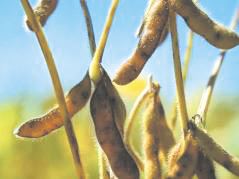|
EPA Concludes Neonicotinoid Seed Treatments Of Negligible Benefit To Soybean Production
URBANA, ILL.
On Oct. 15, the U.S. Environmental Protection Agency issued a report on the benefits of neonicotinoid insecticidal seed treatments to soybean production in the United States. Neonicotinoid insecticidal seed treatments include imidacloprid, thiamethoxam, and clothianidin. According to University of Illinois crop sciences professor Mike Gray, the analysis concentrated only on the potential benefits of imidacloprid and thiamethoxam used as seed treatments.
“Although clothianidin is registered for use as a soybean seed treatment, the authors of the report considered its use ‘minor’ as compared with the other two neonicotinoids,” Gray said.
Gray also pointed out other key points from the report.
• “On average, from 2008-2012, neonicotinoid-treated seeds were applied on 30 percent of soybean acres (with some individual years approaching 40 percent of soybean acres).” page 3
• Within the Corn Belt (Illinois, Indiana, Iowa, Missouri, and Ohio, 2008-2012) 5,413,000 and 5,368,000 acres of soybeans were planted with imidacloprid and thiamethoxam seed treatments, respectively. This translates into 433,600 and 151,700 pounds of imidacloprid and thiamethoxam, respectively, used during those years (2008-2012). page 4
• Across the United States from 2008-2012, 1,151,000 pounds of imidacloprid and thiamethoxam were used as seed treatments on soybeans. page 4
• For this analysis, early-season insects were the primary focus and included many familiar Corn Belt pests such as soybean aphids, bean leaf beetles, cutworms, thrips, and some soil insects (for example, wireworms, seedcorn maggots). page 5
• “This analysis provides evidence that U.S. soybean growers derive limited to no benefit from neonicotinoid seed treatments in most instances. Published data indicate that most usage of neonicotinoid seed treatments does not protect soybean yield any better than doing no pest control.” page 13
• “In cases where pest pressure does necessitate some type of insect control, efficacious alternatives are available for the key foliar pests of soybeans at a comparable cost per acre.” page 13
“The authors of this EPA report acknowledge that the use of neonicotinoids within soybeans is largely prophylactic – an insurance based form of pest management,” Gray said. “In their analysis, they estimate that insecticidal seed treatments cost on average approximately $7.50 per acre. They also point out that foliar insecticides, labeled for use in soybeans, generally cost less than $7 per acre (11 insecticides identified).”

Gray added that the authors of this EPA report make the following assumptions:
• “Nearly all soybean growers are already making foliar pesticide applications of some sort and thus have access to the necessary equipment for application. In addition, growers would not have to make an additional field pass as foliar alternative insecticides that target the same pest spectrum as neonicotinoid seed treatments are applied at the same time as a number of current foliar sprays (including herbicides, fungicides, miticides, etc.) and can be tank mixed. No yield gains are expected from neonicotinoid seed treatments, which means the only potential economic impact would be the cost of an insecticide used as a foliar spray.” page 10
“Some of these assumptions can be challenged, especially on very large farms across the Corn Belt in which producers rely upon aerial applications of pesticides rather than making their own ground-based treatments,” Gray said. “Additionally, the use of fungicides, although increasingly common in recent years, is not routine within every midwestern soybean field. Therefore, application of an insecticide and fungicide tank mix should not be considered a given on most soybean fields, nor should that of a herbicide and insecticide combination. The optimum time to apply a herbicide for weed control can vary considerably from that to deter insect damage.”
Gray explained that the information in this report raises considerable doubt regarding the economic benefits of these insecticidal seed treatments to soybean producers. “The use of insecticidal seed treatments within the soybean production system clearly functions as an insurance-based form of pest management,” he said. “For large commercial farms across the Midwest landscape, many producers typically do not scout soybean fields and utilize economic thresholds to make management decisions for insect pests.”
Over the years, Gray said producers could save on insecticide costs within many midwestern soybean fields by only treating when economic levels of a given insect pest surface. Yet he added that the long-term trend regarding insect management within large-scale commercial corn and soybean production systems reveals an increasing reliance on product-based inputs (insecticidal seed treatments, Bt hybrids) versus labor and management costs (scouting and use of economic thresholds).
“It will be interesting to see if the U.S. EPA considers a similar analysis for these insecticidal seed treatments in corn production systems,” he said. ∆
|
|